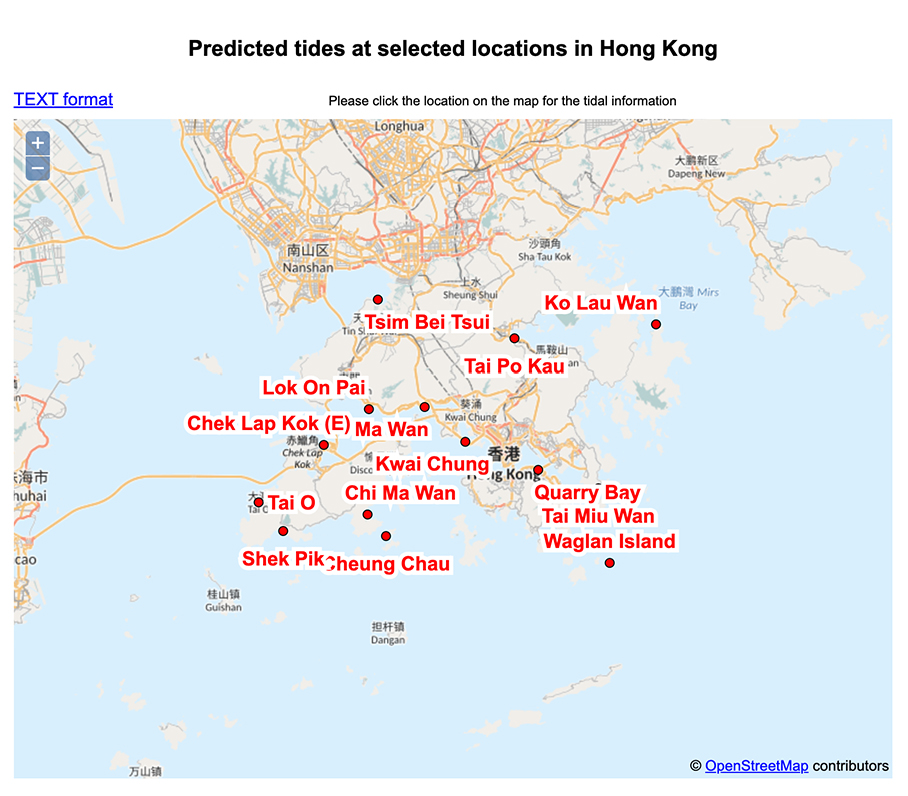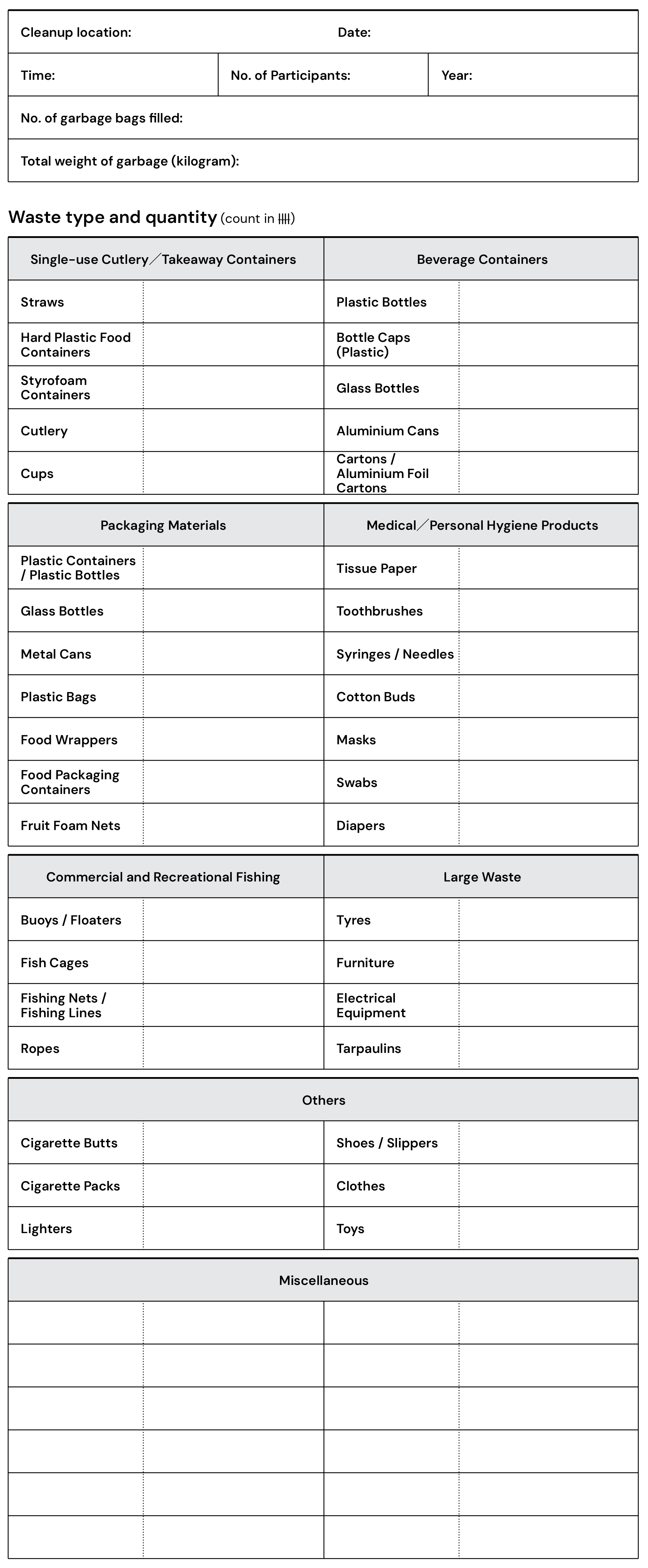Beach Cleanup Activity and Beach Waste Audit (Read How to organise a beach cleanup activity? for details)
It is not difficult for a school to organise its own beach cleanup activity. Details on the selection of the date, location, time, materials and waste handling are provided below to support a beach cleanup by school.
^ If the number of participants is less than 50, tidal height should not be greater than 1.4 metres. If the number of participants is between 50 and 100, tidal height should not be greater than 1.2 metres. If the number of participants is between 101 and 200, tidal height should not be greater than 1 metre.
Step One:Go to the Hong Kong Observatory webpage – Predicted Tides
Step Two:Look up tidal predictions according to your activity date

The red dots on the map are available for tidal predictions. Tidal information for the activity location may refer to the nearest point on the map that faces the same direction within the same region.
Example (1)
Selected To Tau Wan in Ma On Shan for a cleanup → The closest red dot to To Tau Wan on the map in the same region and facing same direction is Tai Po Kau → Click on Tai Po Kau to view tidal predictions. Its tidal height is the one for To Tau Wan.
Example (2)
Selected Ha Pak Nai in Yuen Long for a cleanup → The closest red dot to Ha Pak Nai on the map in the same region and facing same direction is Tsim Bei Tsui → Click on Tsim Bei Tsui for tidal predictions. Its tidal height is the one for Ha Pak Nai.
Step Three:Find the tidal height of your activity’s date and time
Location and Month (Blue Box) / Date (Red Box) / Time and Tide Height (Green Box)
Example (1)
To Tau Wan, Ma On Shan; Activity Time 3:00pm – 5:00pm
Tidal height at 3:00pm is 1.5 m; Tidal height at 5:00pm is 0.61 m → Suitable for a beach cleanup
Example (2)
Ha Pak Nai, Yuen Long; Activity Time 3:00pm – 5:00pm
Tidal height at 3:00pm is 2.2 m; Tidal height at 5:00pm is 1.4 m → Unsuitable for a beach cleanup
※ Note: The tidal forecast from the Observatory may differ from the actual tide of the day, especially before or after inclement weather conditions (e.g. after a typhoon), when predictions and observations may show a greater discrepancy.
✓ Non-gazetted Beaches
✓ Wind Direction
✓ Safer before sunset (especially in winter when sun sets early)
Times of Rise and Set in Hong Kong Observation Almanac
(Choose the year → Choose the month under “Sunrise, Sun Transit, Sunset, Moonrise, Moon Transit, Moonset and Tidal Predictions” section → Look up the sunset time of the activity date.)
Note:The Food and Environmental Hygiene Department (FEHD) provides gloves and garbage bags; Green Power provides free lending service for various cleanup materials.
Food and Environmental Hygiene Department: Different contacts for cleanup locations in different districts (District Contacts)
Green Power: NatureRescue
✓ Sorting
✓ Seal the garbage bags
✓ Proper Disposal
Food and Environmental Hygiene Department: Different contacts for cleanup locations in different districts (District Contacts)
Information on organising beach cleanups on the website includes:
There are numerous beach cleanups nowadays. Stay informed of other groups’ dates and locations when you plan yours to avoid a time-clash.
Email: clean_shorelines@epd.gov.hk
Report your activity after you have decided on the date and location so that other groups or schools can look it up.
When you receive a reply from the EPD after reporting your beach cleanup activity, you will be provided with contact information of the FEHD for refuse collection.
